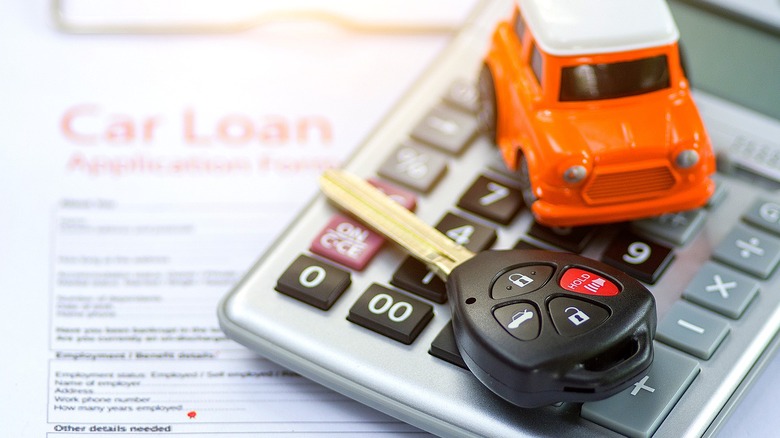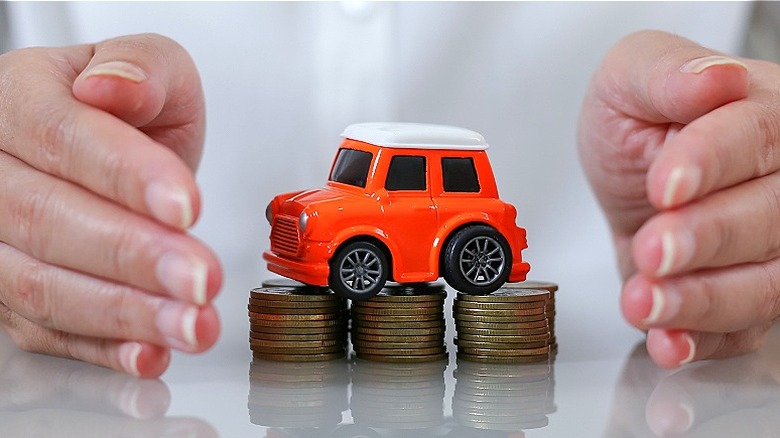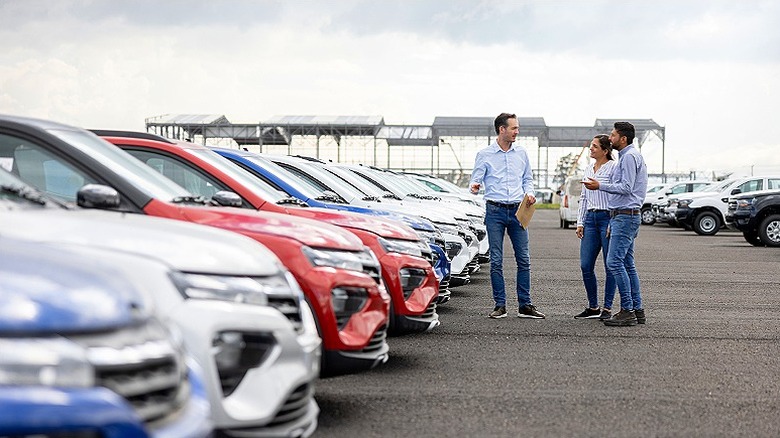You've Been Warned: Think Twice Before Financing A New Car Until Late 2025
Between significant increases in average car prices and prolonged high interest rates, many U.S. consumers have been delaying buying a new car. But for many others without a choice, the financial implications of purchasing a new or used car have been particularly difficult to navigate. According to data from Experian, the total auto loan debt amount for consumers in the country has grown 260 billion since 2020. Meanwhile, auto loan delinquency rates have increased to their highest levels since the Great Recession, per the Federal Reserve.
Even worse for consumers is how detrimental financing their car purchase can be. Consider, a Q3 2024 survey from CarEdge and Black Book found that 31% of consumers who have financed their cars are currently experiencing negative equity. Negative equity is when you owe more in debt on an item than the item is actually worth. This means millions of American consumers owe more in debt on their vehicle than the car is worth for resale. Further, when it comes to luxury and electric vehicles, the rate of negative equity is even worse.
A whopping 46% of EV drivers in the U.s. are currently experiencing negative equity (with Tesla ranking as the worst brand for loan-to-value ratio followed by BMW and Jeep). While all of this can make car buying especially treacherous, it's important to realize there is some good news on the way. Let's dive into how and why negative equity affects car purchases so significantly, and when the situation might get more affordable for potential car buyers.
Understanding negative equity in cars
Multiple factors are at play when it comes to the rise in negative equity for vehicles. For one, car depreciation can rapidly lower the worth of a vehicle, especially a new one. According to Ramsey Solutions, new cars can lose up to 60% of their total value in their first five years (with 10% of that loss happening when you drive the car off the dealership lot for the first time). Unfortunately, many consumers aren't fully aware of the impacts of car depreciation. In fact, CarEdge's survey found that 61% of drivers significantly overestimated their car's value, with 17% believing their car was worth $5,000 or more than its actual trade-in value.
Another significant factor in the increase in negative equity for financed drivers today, though, is loan length terms. With higher car prices and interest rates, many have gone to longer term loans in order to keep their monthly payments more affordable. However, car owners who agreed to an 84- month loan term had, on average, $5,000 in negative equity compared to over $12,000 in actual equity for those with 36-month loans.
Yet another part of the current car-equity situation is timing. Those who purchased their car in or after 2022 are the most likely to experience negative equity (with 39% of drivers reporting negative equity compared to the overall average of 31%). This is largely thanks to the spike in car prices, and the need for rising interest rates in order to combat the staggering inflation that affected the country post-pandemic.
When to buy a new car if you can wait
While finances are difficult for many current car owners, those who have delayed purchasing a new vehicle should still proceed with caution. While the Fed has finally started lowering interest rates (it lowered the rate by a half-point in September 2024 and has signaled additional drops before the end of the year), the process for how that can and will eventually affect consumers can be slow. In other words, it can pay to continue to wait.
Moody's chief economist Mark Zandi explained to MarketWatch that the average five-year car loan rate should drop to around 7% by the end of 2025. (Statista data indicates the average five-year auto loan rate in August 2024 was 7.76%, which is notably higher than the 4.15% during the same month in 2021). However, Zandi also noted that any potential drop in loan rates will still ultimately depend on whether the Fed continues to cut the federal-funds interest rates every quarter or not.
It is also important to realize that even with a lowered auto loan rate, average car prices are still significantly higher than just a few years ago. According to CoPilot's Car Price Index Report, prices of new cars in 2024 are up 29% (or $11,137), while used car prices have increased 34% (or $8,084) when compared to 2020 prices. Even with the help of more affordable financing, affordability will continue to be a significant issue for U.S. consumers looking to buy new (you should think twice before pursuing a new vehicle) or used vehicles.


